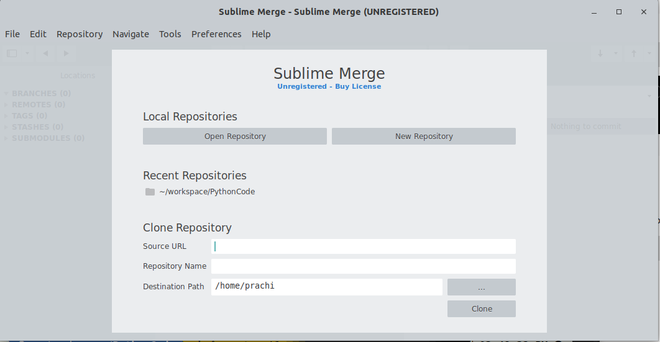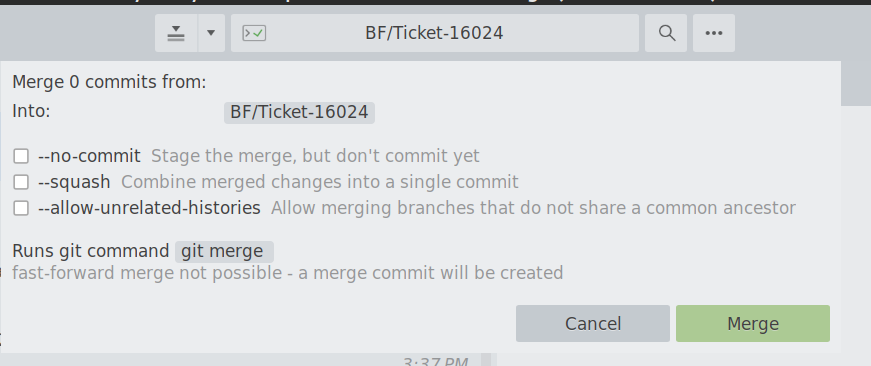

- #SUBLIME MERGE MERGE BRANCHES HOW TO#
- #SUBLIME MERGE MERGE BRANCHES INSTALL#
- #SUBLIME MERGE MERGE BRANCHES UPDATE#
If I look in SourceTree, I see a Merge button at the top. In this case, I would like to merge the future changes from the main branch into the feature-spBlitz branch. Merging is bringing differences from a copy into this set of code. How do I get these changes into my branch? After all, before I send my code to others, I should be sure it works with their code. In this case, the main branch has advanced past the feature branch that I am working on. If I change back to the feature-spBlitz branch (either double click or with git checkout in the command line), I see only 1 file. These represent the current state of this branch. When I do that, I see three files in a Windows Explorer window. I can see this by selecting the main branch on the left. The current tags for main and origin/main are at the top of the graph. The graph shows that this branch is behind the main branch. Note the feature-spBlitz branch is highlighted on the left, meaning it is selected. The current state of this branch is shown in SourceTree. When I branched the code in the third article, I named my branch feature-spBlitz. In other words, the current view of code in my file system is the basis for the copy in the branch. The copy is based on my current branch, not on master/main, or any other branch.

When I create a branch, I am creating a copy at that point in time. We didn't do that, but we'll do that now so that we can explain a concept and also give us a few ways to merge code. The Branch BaseĪt the end of the third article, one of the challenges was to create a new branch based on master.
#SUBLIME MERGE MERGE BRANCHES HOW TO#
In this article, we will look at how to merge code, or move changes from one branch to another. In the previous articles, we set up a repository and shared files through GitHub and created copies, called branches.

#SUBLIME MERGE MERGE BRANCHES INSTALL#
So You can install it via importing the Sublime Merge repository to your Ubuntu system:Įcho 'deb apt/stable/' | sudo tee -a /etc/apt//sublime-text.listĪlso import the GPG key by running the command below: sudo wget -qO - | gpg -dearmor | sudo tee /usr/share/keyrings/sublime.This is the fifth article in a series on the basics of using Git.
#SUBLIME MERGE MERGE BRANCHES UPDATE#
Update your Ubuntu system packages with running the below command:.This can be used to open repositories, search, and merge files.Īlso visit: How to Install Sublime Text 3 editor on Ubuntu systemsįollow the steps below to get started with Sublime Merge: Sublime Merge includes a command line tool, smerge, to work with repositories on the command line. It is possible to submit (push) and retrieve (pull) modifications from the interface Sublime Merge is a git client. It allows to read a git repository in order to display the differential of the last modifications, the list of submissions (commits) and the branches, among other things. In this guide, we will show you how to install Sublime Merge on Ubuntu systems


 0 kommentar(er)
0 kommentar(er)
